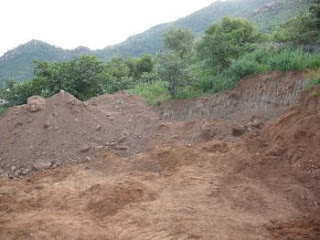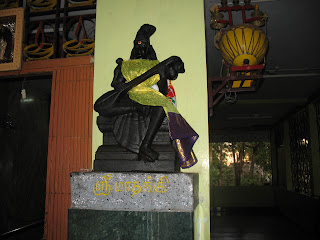The first Protestant missionaries to India were German Lutherans sent by the King of Denmark and who landed in Tranquebar, Tamil Nadu on 9th July, 1706. The Tranquebar missionaries and Protestant Christians in Tamil Nadu were influential in many areas. They translated the Bible into Tamil and Telugu languages, were grammarians and lexicographers and studied the religious, social and cultural customs of the people. They translated Indian literature into European languages, established indigenous churches and public schools and set up a theological seminary.

[Tranquebar, about 1600]
Arcot is a City and a Municipality in Vellore District, Tamil Nadu. It is located on Palar River, and straddles a strategic trade route between Chennai and Bangalore, between Mysore Ghat and the Javadi Hills. The people who lived in the Arcot region especially in and near Tiruvannamalai, belonged to a clan called the Arcots. These were warriors and landowners, some of them were descended from ancient Dravidians and Hindu Marathas. The Arcot region was one of the quickest areas in Tamil Nadu to develop, perhaps in part, due to the influence of Danish missionaries.
The first missionary of the Danish Missionary Society (DMS) was a German Rev. C.C.E. Ochs. He started his first Mission station, Bethanien, at Melpattambakkam in South Arcot in 1861. Now all its activities have been transferred to the nearby town Nellikuppam. The second mission station of DMS was opened at Tirukkoyilur in 1869 and was called "Siloam". Saron, a third mission station of DMS, was opened in the year 1882 and situated just outside Tiruvannamalai. In 1898 a mission station was built in the town. From 1905 it was called "Carmel." The fourth mission station in the Arcot District, "Bethesda," in Kallakurichi was built in 1893. Later DMS started mission stations at Panruti, Vriddhachalam, Devanampatnam, Darisanapuram, and Servaroj Hills.
In the late 1950s the Church was handed over to Indian hands with Bishop D. Peter being the first Indian Bishop. The church was renamed the Arcot Lutheran Church and is still known by that name. Education and health were given to all people. The Church is serving Tamil-speaking population in the Districts of South and North Arcot, Tamil Nadu. [Other work of the Danish Missionary Society is now undertaken under the name of Danmission].
Arcot Lutheran Church has about 30,000 members and works in several Districts of Tamil Nadu. It is a Church, committed to service to society through schools, orphanages, homes for women, hostels for students and working women, hospitals and community service centres in villages and towns. Currently the Arcot Lutheran Church educates nearly 40,000 students in 90 schools. The current Bishop of Arcot Lutheran Church is the Rt. Rev. Gideon Devanesan. The Arcot Lutheran Church headquarters are based at Cuddalore but much school and social work of the Organisation is undertaken here at Tiruvannamalai.
Lutheran Partners in Global Ministry became associated with the Arcot Lutheran Church in 1996 when it began to support children in three boarding homes; Melpattambakkam, Siloam and Saron.





















































